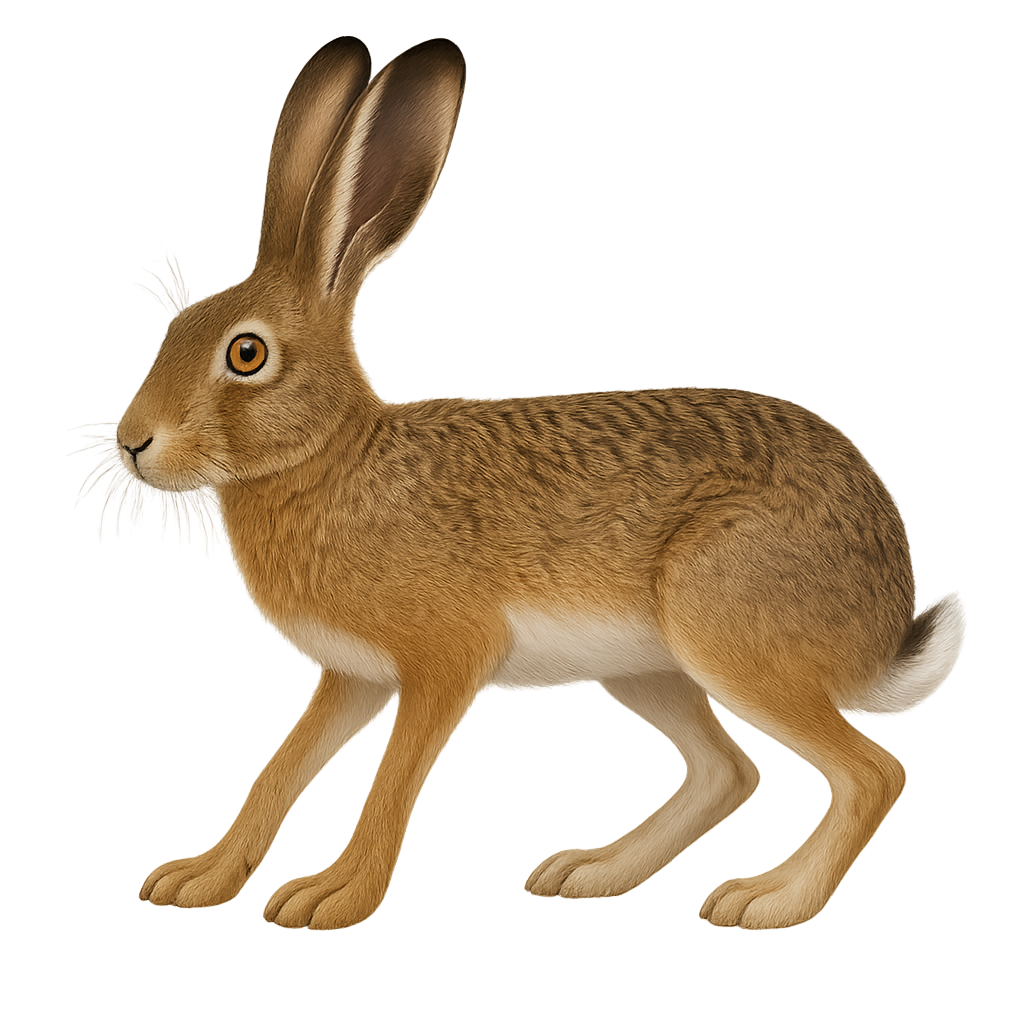Your wildlife photography guide.
Explore the iberian hare in detail, study its behavior, prepare your shots.
Where to observe and photograph the iberian hare in the wild
Learn where and when to spot the iberian hare in the wild, how to identify the species based on distinctive features, and what natural environments it inhabits. The WildlifePhotographer app offers tailored photography tips that reflect the iberian hare’s behavior, helping you capture better wildlife images. Explore the full species profile for key information including description, habitat, active periods, and approach techniques.
Iberian Hare
Scientific name: Lepus granatensis

IUCN Status: Least Concern
Family: LEPORIDAE
Group: Mammals
Sensitivity to human approach: Suspicious
Minimum approach distance: 30 m
Rut period: January to August
Gestation: 41-44 jours
Births: February to October
Habitat:
Open Mediterranean areas and sparse forests
Activity period :
Mainly active at night, generally discreet during the day.
Identification and description:
The Iberian Hare is a rodent endemic to the Iberian Peninsula, primarily found in Spain and Portugal. It measures between 50 and 60 cm in length, with a tail of 6 to 9 cm, and weighs between 2 and 3 kg. This hare is smaller than its European cousin, with a lighter coat, often gray-brown or light brown, with darker markings on the back and a paler hue on the belly. The Iberian Hare primarily inhabits open plains, oak forests, and meadows, where it feeds on vegetation, mainly grasses, roots, leaves, and sometimes young shrub shoots. It is a crepuscular and nocturnal animal, most active at dusk and during the night. While the species is not immediately endangered, it is threatened by habitat loss, hunting, and the introduction of predators such as foxes and dogs.
Recommended lens:
400 mm – adjust based on distance, desired framing (portrait or habitat), and approach conditions.
Photography tips:
Approach discreetly and with patience, as hares are often very reactive and may flee quickly if you approach too abruptly.
Photograph early in the morning or late in the afternoon, when the light is soft and the animal is more active.
Be ready to capture a rapid movement: Hares are fast and can change direction suddenly, so keep your camera ready for an instant shot.
Respect the natural environment: Avoid disturbing their foraging or resting behavior by maintaining a respectful distance.
The Sierra Hare is an endangered species. While its population is threatened by habitat loss, it is important to respect its natural space and not disrupt its activities. Be mindful of the impact of your presence and follow local conservation regulations to protect this species.
The WildlifePhotographer App is coming soon!
Be the first to explore the best nature spots, track rutting seasons, log your observations, and observe more wildlife.
Already 1 430 wildlife lovers subscribed worldwide

